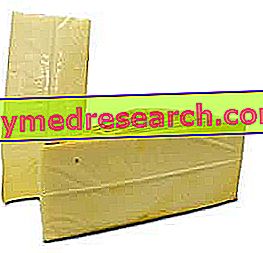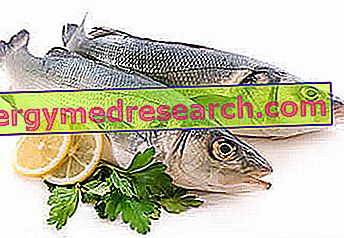Generality
Fontina is a typical Italian cheese, soft and semi-raw (more or less seasoned), which since 1995 has enjoyed the DOP value (Protected Designation of Origin); this mark represents a qualitative protection of fontina, which, according to the requirements of the European Union, MUST BE PRODUCED within the geographical area of the Valle d'Aosta.

The fontina enjoys and participates in the enhancement: of the territory of origin, tradition, craftsmanship, quality and the raw material of which it is composed. The main requirement of the specific cheese specification indicates that: the processing of whole bovine milk (derived from the native breed: Valdostana Pezzata ) which leads to the creation of fontina, MUST NOT ALTERLY significantly alter the nutritional value of the raw material of origin.
Fontina has been present in the Valle d'Aosta area since the 13th century AD and its production is currently managed by the "Consorzio Produttori Fontina" and the "Cooperativa Produttori Latte e Fontina" (coop. Arl). For its identification on the market, the consortium has coined a trademark composed of three characteristic signs:
- Brand of origin of the producer, assigned during production
- Selection marking
- Cash on sale, paper on which the graphic elements of product identification are cited.
Characteristic aspects of fontina production
In summary, fontina cheese is a soft and seasoning cheese that varies according to the type of fontina to be obtained. The determining factors in the production of fontina are three:
- Milk quality, which must be obtained from cows belonging to the Valdostana Pezzata breed; it is necessary that the animals feed on the pasture with green fodder of the summer period and local hay for the other months
- Milk processing, which foresees its use within and not beyond 120 'and does not allow heating above 36 ° C before coagulation
- Fermentation of the proteolytic microflora consisting of sixteen different species belonging to the genera: Chryseobacterium and Pseudomonas (76% of the total), but also Macrococcus, Stenotrophomonas, Candidatus, Microbacterium and Serratia .
Drawbacks in the production of fontina
One of the primary bacteria in the fermentation of fontina, Pseudomonas, is also a very problematic element to manage. The bacterial strain in question has the ability to:
- Metabolize a wide range of compounds
- Proliferate massively at 20-30 ° C but without stopping until 0-4 ° C
- Gathering in large superficial colonies which develop into a film resistant to common chemical detergents: a biofilm
Fontina nutritional composition - INRAN Food Composition Tables | ||||||||||||||||||||||||||||||||||||||||||||||||||||||||||||||||||||||||
 | ||||||||||||||||||||||||||||||||||||||||||||||||||||||||||||||||||||||||
Nutritional values (per 100 g of edible portion) | ||||||||||||||||||||||||||||||||||||||||||||||||||||||||||||||||||||||||
| ||||||||||||||||||||||||||||||||||||||||||||||||||||||||||||||||||||||||
It can therefore be deduced that the proliferation of Pseudomonas is not limited to the fermentation of milk BUT it concerns all the equipment and premises of dairy production. An excessive environmental contamination of the bacterium compromises the healthiness and safety of the workplace even if, fortunately, it is NOT able to adhere to copper; therefore a part of the instrumentation (above all the containers) goes beyond the most inquisitive sanitation interventions. For everything else, cleaning and disinfection with soda-based treatments or, more recently, with enzymatic detergents (tested by the Institut Agricole Régional ) are necessary.
Nutritional characteristics
Fontina is a particularly fat and caloric cheese, as it is obtained from whole cow's milk. Lipids tend to be saturated, therefore not healthy in the context of a high-calorie diet and a sedentary lifestyle.
On the other hand, since it is a semi-raw fermented product, it makes use of a very important vitamin content, although often the fontina bought with "little attention" is NOT "vera fontina" but a poor quality substitute.
Fontina contains a good protein fraction with a high biological value and some traces of lactose
In addition to saturated fatty acids, another element that should limit consumption is undoubtedly cholesterol, present in abundant quantities. The subjects who, with regard to the lipid content, should moderate their consumption are in particular dyslipidemics (who suffer from hypercholesterolemia) and those who are overweight.
Fontina, like many other cheeses, is rich in sodium, therefore it does not lend itself to hypertensive nutrition. It also brings significant amounts of calcium and phosphorus which, if on the one hand favors the achievement of the recommended ration of the former, also constitutes a potentially excessive source of the latter (see Ca / P ratio).
Vitamins such as riboflavin (vit. B2) and vitamin A abound.
Reference sites:
- //www.consorzioproduttorifontina.it/
- //www.fontinacoop.it/
- //www.regione.vda.it/gestione/riviweb/templates/aspx/informatorenew.aspx?pkArt=1266



